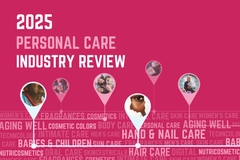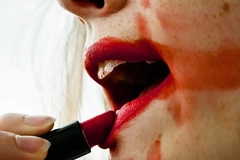Skin Cancer Foundation warns of SPF myths on social media fueling anti-sunscreen movement

The Skin Cancer Foundation Photobiology Committee has released new standards for its Seal of Recommendations for UVA and UVB radiation. The changes were released during Skin Cancer Awareness Month, following a statement warning of misinformation about sun protection circulating on social media and growing rates of skin cancer in the US.
Personal Care Insights speaks with Anna Chien, an associate professor of dermatology at Johns Hopkins University School of Medicine, US, and a Skin Cancer Foundation’s Photobiology Committee member. She says that new recommendations are crucial as people’s sun exposure increases and anti-SPF misinformation spreads on social media, encouraging young people to skip sunscreen.
“Medical consensus is rigorous. It does not move quickly or follow trends. While sharing new ideas on social media can be exciting, it can also be dangerous if these trends are not medically backed, or worse yet, the science proves them to be dangerous to human health.”
 Chien stresses that skin cancer may develop later in life even without immediate sunburn.Updated recommendations
Chien stresses that skin cancer may develop later in life even without immediate sunburn.Updated recommendations
To qualify for the new Seal of Recommendation by the Skin Cancer Foundation Photobiology Committeesunscreen products for daily use must have an SPF of at least 30 and validated water resistance claims. For active sunscreen, SPF must be at least 50, with validated water resistance claims to last between 40 and 80 minutes.
“The committee also increased the broad-spectrum protection for sunscreens that carry the Seal of Recommendation to a critical wavelength of 373 nm. In the program, we also increased the minimum ultraviolet protection factor (UPF) requirement for sun-protective fabrics to UPF 50,” details Chien.
Chien explains that manufacturers must submit a digital application with information about the product, including third-party lab testing results.
“For sunscreens [both daily and active], in addition to proof of the performance of their active ingredients, manufacturers must also submit 20 passing Human Repeat Insult Patch Tests and phototoxicity results.”
She adds that all data is then personally reviewed by The Skin Cancer Foundation’s Photobiology Committee members.
“The sun emits two types of ultraviolet radiation directly linked to skin cancer: UVA and UVB, and people need to be aware of that. UV rays are also invisible, which could be another reason people do not realize they exist. It is not until they experience sunburn, photoaging, or skin cancer that they realize the dangers of UV radiation from the sun,” says Chien.
Stressing that photodamage is cumulative, she adds that skin cancer may develop later in life even if there is no immediate sunburn during unprotected sun exposure, and “people often do not pay attention until they get skin cancer.”
Anti-SPF movement An anti-SPF movement has been circulating on TikTok following hormone-disrupting studies.
An anti-SPF movement has been circulating on TikTok following hormone-disrupting studies.
In recent years, an anti-SPF movement has circulated on social media. Many “health influencers” have promoted the idea that direct sun exposure is healthier than using sunscreen.
Columbia University Irving Medical Center, US, released a statement last year aiming to debunk TikTok’s anti-sunscreen claims.
The university says it started with studies revealing that some sunscreens contained hormonal-disrupting chemicals that can be absorbed into the bloodstream. This information was “seized and mischaracterized in findings,” leading social media influencers to encourage their followers to stop using SPF completely.
Columbia says this significant misrepresentation of facts to a large audience via social media is concerning for physicians, scientists, and public health advocates.
Chein says an issue with this might be people potentially misunderstanding the science.
She adds that sunscreen studies done in a lab or controlled research settings are cited online, which may lead to confusion, as these research findings do not necessarily translate to real-world settings.
“It also takes a thorough discussion to tease out these results, and online platforms do not necessarily always lend well to that,” says Chien.
 When reading something on the internet, it’s important to check the source, stresses Chien.Checking sources
When reading something on the internet, it’s important to check the source, stresses Chien.Checking sources
Chien stresses the issue of online literacy. She explains that social media users should check the sources when reading something online, especially medical recommendations. She continues that people should also ensure the information comes from physicians and is backed by science.
“Media platforms can be a force for good, as much as they can be a force for harm. We aim to provide medically-backed advice regarding skin cancer and sun protection for consumers, wherever they receive their information,” Chien says.
“The foundation has a very actively engaged social media presence. We hope the more information we can provide, the more lives we can save. Skin cancer is the most common cancer. It is time for consumers to start taking sun protection seriously.”
A recent American Academy of Dermatology study revealed that 96% of Americans believe sun protection is essential. However, in 2024, 67% had tanned skin, and 35% were sunburned, including approximately 50% of Gen Z and Millennials.












